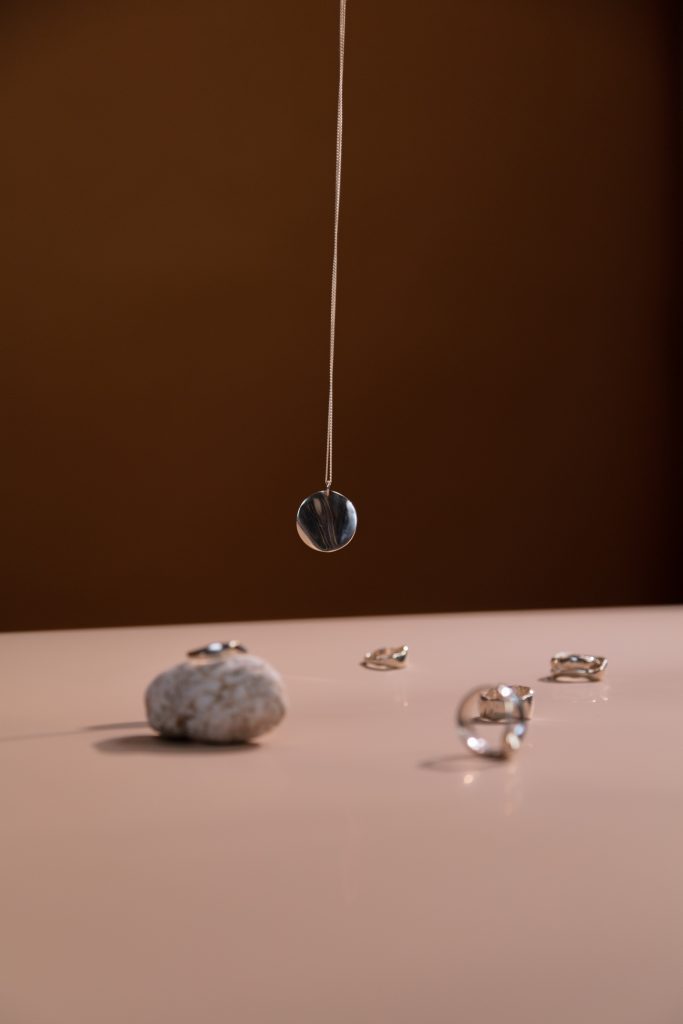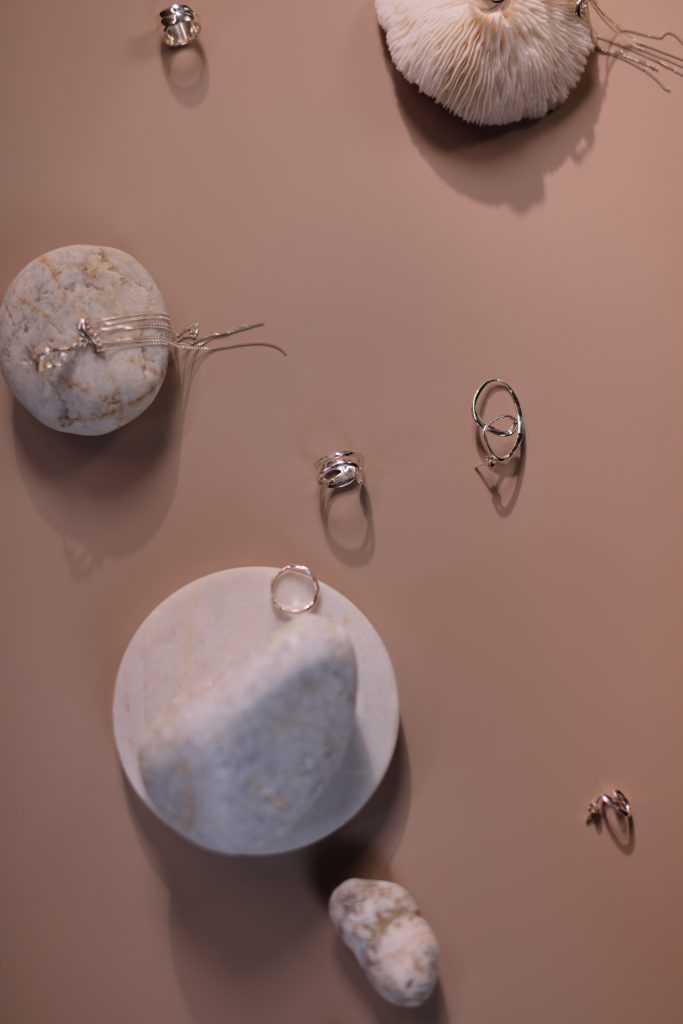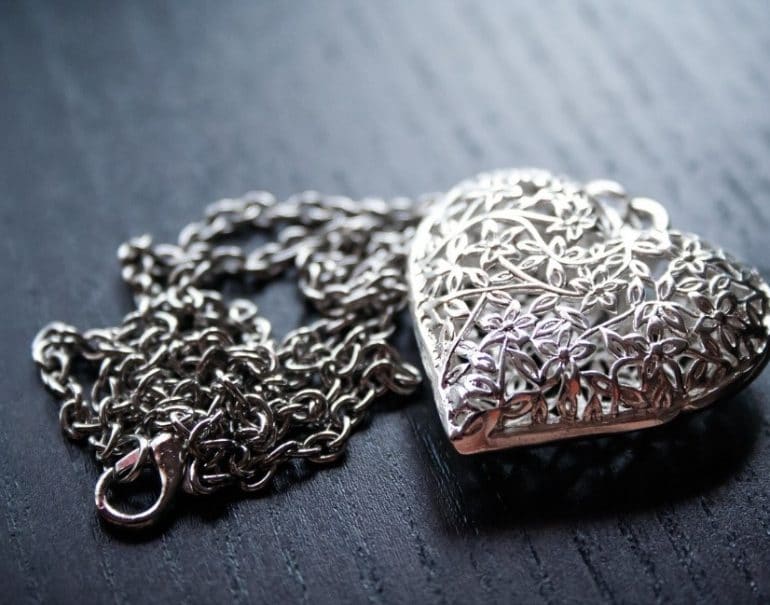You can see teens and older adults wearing silver jewelry in various designs and varying degrees of brilliance. Silver is a precious metal in the same level as gold and platinum. You have probably heard the saying ”born with a silver spoon in the mouth” (not gold), which means a person is born into a wealthy family. That is because, in ancient times, silver was more precious and widely used than gold.
Silver is a lustrous white metal, priced for its electrical conductivity and decorative beauty. It has this distinctive brilliant white color that goes well with various gemstones, although silver looks good on its own. In addition, silver has long been valued for its ductility, malleability, and resistance to atmospheric oxidation – properties that make the metal a favorite for jewelry, ornament, and coin manufacturing. Although silver is widely distributed, the amount is not as significant as other metals.
Using silver for jewelry & more through time
 Today, most people wear silver jewelry. But using silver for jewelry is an ancient practice. Silver ornaments were found in many royal tombs that date as far as 4000 BCE. Silver was also used as currency during those times, along with gold. Older generations also believe that silver has healing properties, which is why older people love wearing silver jewelry, like earrings, necklaces, and bracelets.
Today, most people wear silver jewelry. But using silver for jewelry is an ancient practice. Silver ornaments were found in many royal tombs that date as far as 4000 BCE. Silver was also used as currency during those times, along with gold. Older generations also believe that silver has healing properties, which is why older people love wearing silver jewelry, like earrings, necklaces, and bracelets.
Many cultures believe that silver changes color when the owner is sick. According to science, there may be some truth in it, but silverware and silver jewelry have anti-inflammatory and disinfectant functions. For example, in ancient Vedic and Ayurvedic texts, several passages said silver should be used for cleansing practices, especially the ones related to food and drink. Likewise, in ancient China and Korea, silverware was used to check if arsenic was present in the food and drink of royalty.
The beauty of silver jewelry
 Generally, silver’s purity is expressed in Ag measurement. For example, an Ag925 measurement is for sterling silver. The specific measurement was used during the 1851 launch of Tiffany’s first pure silver jewelry. Since then, it has become the industrial standard. Today it is one of the appraisal standards for sterling silver.
Generally, silver’s purity is expressed in Ag measurement. For example, an Ag925 measurement is for sterling silver. The specific measurement was used during the 1851 launch of Tiffany’s first pure silver jewelry. Since then, it has become the industrial standard. Today it is one of the appraisal standards for sterling silver.
Aside from its standard purity, silver has a mysterious aura. People, who know and understand silver, say that it is not that eye-catching when you look at silver jewelry on its own. However, it gives off a particular personality when a person wears it. For some people, you can see a hint of graceful appearance. On other people, wearing silver jewelry makes them uninhibited and unrestrained. Finally, some people show a classical and mysterious attractiveness.
Many silver jewelry pieces are bright, but they are not showy, making them appropriate when wearing clothes with bright colors. Silver jewelry will not clash with beautiful clothing but enhances the wearer’s unique charm.
Many people, especially today, are drawn to silver jewelry because the metal is flexible and can be fashioned into many beautiful and intricate designs. Further, silver can help wearers to display their quiet civility and elegance.
Shiny silver
Silver is one of the shiniest among the metals, making it a popular and excellent material for various jewelry designs. It is also the whitest metal—precious, heavy, and cannot be eroded by oxygen, just like copper and gold. Gold is soft in its purest form. Pure silver is also soft but a bit harder than gold, which means that pure silver is prone to scratches and dents. This softness of silver is the reason why it is often alloyed with copper to improve its durability. Most sterling silver jewelry contains copper, but other metals, such as germanium, platinum, and zinc, are also used as alloys.
Typically, sterling silver consists of 92.5 percent pure silver combined with 7.5 percent copper. As a result, sterling silver jewelry bears a 925s, while other silver items, such as cutlery, often have an 830s mark, indicating that its silver content is 83 percent. Jewelers use different percentages of alloys to vary the silver’s properties. But 7.5 percent is the optimal amount of copper that will give strength to silver without the metal losing its incredible shine.
Silver may soon become rarer. Experts estimate that the peak of silver production will be from 2027 to 2038, but others think it will be in 2034. Geologists predict that there are only 560,000 metric tons of silver left in the mines worldwide, and the prediction is that all silver mines will be nearly exhausted or even empty by 2240.

